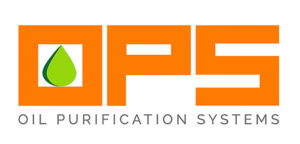When you call us with engine or truck related problems, please help us help you by knowing exactly what engine, transmission and rear gear ratio your truck has. Also, it is helpful if you know your cruising RPM, cruising turbo boost and peak turbo boost. We need this information to help you with fuel mileage questions. If you are just calling for a part such as a torsional damper, turbo or exhaust manifold, some of that information is not necessary. Turbo boost tells us a lot about how your engine is performing, and most trucks are not equipped with this gauge. The boost gauge kit is only $102.00 and very easy to install. You can gain 1 mile per gallon of fuel if you drive by the boost gauge.
Let’s talk a bit about fuel rail pressure and its effects on engine performance. A higher rail pressure can improve your PM (particulate matter) and HC (hydrocarbon) emissions. It can also reduce smoke and fuel consumption and increase power. It has similar effects to adjusting the main injection timing. When you increase rail pressure, your engine gets the same quantity of fuel in a shorter period of time, and the injected fuel droplets are smaller. Smaller fuel droplets will increase the speed of combustion and improve the quality of the air-fuel mix.
OEM’s have been increasing fuel pressure every generation since engines have come equipped with common rail injection systems. In general, increased rail pressure is a good thing. However, like most things, there are trade-offs. An increase in rail pressure equates to increased NOx emissions. This can be reduced afterwards with aftertreatment, at the cost of more urea usage. But there is also a limit on how much urea can be injected. Like most things, there is a happy medium on rail pressure. When you increase rail pressure too much you can make combustion efficiency worse. When there are a lot of small fuel droplets, they use up a lot of the localized oxygen, leaving the rich part of the spray looking for oxygen. Since the larger fuel droplets can’t find oxygen quick enough, they turn into soot particles, undoing the improvements you were trying to make in the first place.
Moving on to our next topic, we are thrilled to announce that Pittsburgh Power has acquired Oil Purification Systems (OPS). For almost 10 years we have been a dealer and distributor for OPS and have sold and installed hundreds of Eco-Pur systems for many satisfied customers. OPS has a great reputation for reliable products and good customer service. Like Pittsburgh Power, OPS was created to serve owner operators and the small commercial fleet community. OPS will soon join our collection of quality products, all designed to make life better for the owner operator truck driver.
The entire OPS manufacturing and warehousing operation will be moved to Pittsburgh Power’s location in Saxonburg, PA. We will continue to supply the exact same products you know and love from OPS with the same high-quality standards. Over time, we will observe customer feedback and will consider making improvements, as well as adding compatibility with new truck models. Since we are already equipped to sell and install OPS products, we are more than able to handle all your OPS needs. For OPS related sales or service inquiries, please contact Pittsburgh Power directly.
We would like to take this opportunity to answer some common questions about the OPS Eco-Pur system. What is the difference between the Eco-Pur and standard full flow filters? Standard full flow filters will filter out particulates to the 10-40 micron range, while the Eco-Pur filter will remove particulates down to 3 microns. The Eco-Pur evaporator removes liquid contaminates that create acid, oxidation and sludge, which can dilute your oil. The Eco-Pur system refines the oil by removing all contaminants to maintain oil quality and extend additive package life.
What harm do liquid contaminants pose to an engine? When water mixes with sulfur and heat, acid is formed. Water will also emulsify oil. This reduces lubricity and oil’s ability to properly cool components. In addition, water will increase oxidation rates, causing rust and added wear to components. Diesel fuel mixes with oil and thins oil out, reducing viscosity and oil effectiveness.
Why do you need an on-board refining system to remove liquid contaminants? Isn’t engine oil hot enough already? Engine oil does create sufficient heat to evaporate liquid contaminants, however, to evaporate completely, the water, diesel fuel and glycol must be brought to the surface. The oil in the reservoir is in constant motion during engine operation, which emulsifies water and mixes the diesel fuel and glycol, trapping them in the oil. When vehicles are stopped, the oil will come to the surface, trapping the water, fuel and glycol below. Even if the liquids would evaporate, they would be contained within the engine block, condensing when the engine cools, then returning to the oil.
For almost 20 years (since 2002), I have been submitting these articles to 10-4 Magazine for the “gear-heads” out there. I wanted to take a moment to acknowledge and recognize Andrew Wilson, our IT guy, who now helps me put these together on a regular basis, and, this month, Leroy Pershing, one of our electrical engineers, who contributed to this article. My name is at the top, but I don’t do this alone! Thank you to the people around me that help me and make me look good. If you have questions or comments, feel free to call us at (724) 360-4080 or visit us online at www.pittsburghpower.com. We are always here to help you!



